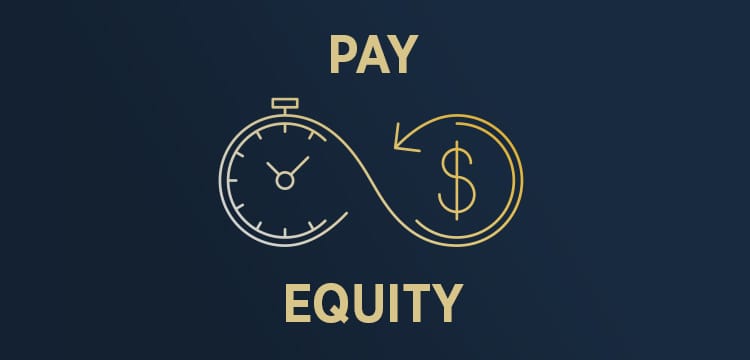Pay Equity
Equity means equal. Pay Equity is therefore an act that kicks against gender discrimination. This means employers should be able to treat the female job and the male job equally. Pay equity compares jobs usually done by women with different jobs usually done by men. Female jobs are mostly done by women such as librarians, childcare workers, or secretaries. Male jobs are mostly done by men, such as truck drivers, firefighters, or shipping clerks. However in the modern world, today women are successfully handling the male jobs as well as the female jobs. In this article, we’ll take you through the women pay equity, gender, pay equity laws, and analysis. Your comment and views are also welcomed in the comment section below.
So, In general, pay equity means treating employees the same when they perform the same or similar job duties. While looking out for other factors, such as their experience level, job performance, and tenure with the employer. However, by ensuring employees are paid equitably. Employers can increase efficiency, creativity, and productivity by helping to attract the best employees, reduce turnover and increase commitment to the organization.
Women Pay Equity
Since the follow-up on the gender gap. The difference between the earnings of women and men has reduced, but only by an incremental amount each year. There remains a gap in how men and women are paid, even when all compensable factors are controlled. Meaning that women are still being paid less than men due to no attributable reason other than gender.
Consequently, women working full time in the U.S. earn 82 cents for every dollar earned by men. Meanwhile, it doesn’t stop there. The consequences of this gap affect women throughout their lives. Though women now outpace men in higher education, women also hold nearly two-thirds of the outstanding student debt in the United States. Also because of the gender pay gap, women have a harder time repaying loans and even follow women into retirement. As a result of lower lifetime earnings, they receive less in Social Security and pensions. In terms of overall retirement income, women have only 70% of what men do.
In some occupations, women collectively are receiving billions less than they would with equal pay. For instance, women working as physicians and surgeons get a pay of $19 billion less annually than if the pay were the same as men in that occupation. Though the women pay equity is now a vital issue.
Gender Pay Equity
The gender pay gap is the average difference between the remuneration for men and women who are working. In the United States, for example, the non-adjusted average female’s annual salary is 79% of the average male salary, compared to 95% for the adjusted average salary.
The gender pay gap can be a problem from a public policy perspective. Consequently, it reduces economic output and means that women are more likely to be dependent upon welfare payments, especially in old age.
Read Also: SMALL BUSINESS LOANS FOR WOMEN: Best 2021 Startup Options & Detailed Guide
The gender pay gap refers to the difference in earnings between women and men. However, experts have calculated this gap in a multitude of ways, but the varying calculations point to a consensus. Women consistently earn less than men, and the gap is wider for most women of color.
Analyzing the Census Bureau data from 2018, women of all races earned, on average, just 82 cents for every $1 earned by men of all races. This calculation is the ratio of median annual earnings for women working full time, year-round to those of their male counterparts, and it translates to a gender wage gap of 18 cents. When talking about the wage gap for women, it is important to highlight that there are significant differences by race and ethnicity. The wage gap is larger for most women of color.
Pay Equity laws
Most state laws provide broader protection than the federal Equal Pay Act by requiring employers to pay men and women equally for “substantially similar” work, rather than for “equal” work. Moreover, many states have expanded fair-pay requirements beyond gender to include race and other protected characteristics.
Nearly all state laws on the subject mandate greater transparency in the workplace and protect employees from reacting when they attempt to correct pay imbalance. Some states also protect employees from retaliation when they openly discuss their pay with co-workers.
About forty-four states approve pay equity laws since the signing of the federal equal pay act of 1963 into legislation. But despite the “well-intentioned” laws, progress on closing the pay gap has stalled, “The State of Pay Equity Laws in the U.S.—2021,” a March 11 report found. The pay equity laws are missing some of the key components to make them “effective for employees and feasible for companies to comply,” according to the report.
The laws must analyze both the pay gap and pay equity; have “equal work” compare employees based on “substantially similar or comparable work”; use a broader comparison than the “same establishment” and provide guidance on neutral, position-related pay policies, according to the report. The organizations also recommended laws require pay equity based on gender and race; permit underpaid employees to file lawsuits; require pay equity disclosure and reporting; provide “safe harbor protections”; and require accountability when the pay equity gap go unaddressed
Pay Equity Analysis
A pay equity analysis also called an equal pay audit or a pay parity audit is a method of researching pay rates within your organization and assessing any differences in pay relative to age, race, gender, job description and responsibilities, seniority, and a wide range of other criteria.
The goal of a pay equity analysis is twofold. First, it’s a good idea for any organization to insulate itself from potential wage discrimination lawsuits. More than ever, state and federal governments, media, and legal bodies like the Equal Employment Opportunity Commission are turning their attention to the pay gap.
Secondly, a pay equity analysis is a great way for HR leaders to improve the pay situation within their own organizations. This, in turn, will help them attract and retain the right employees by guaranteeing competitive rates, offering equitable opportunities for advancement, and promoting excellent treatment both laterally and vertically within their organization.
FAQs
What is the purpose of pay equity?
Employers must detect and correct any gender discrimination in their compensation systems, as well as adjust the wages of employees in female career fields so that they are at least equal to the earnings of employees in male career fields deemed to be comparable in value based on skill, effort, and performance.
Is pay equity good?
According to Hougardy, organizations that commit to paying parity are more likely to attract higher-quality, diverse talent. Employees are more interested in their work if they believe there is a commitment to pay equity and doing the right thing.
How do you achieve pay equity?
- Make a compensation structure.
- Collect the information required for a salary analysis.
- Close any compensation disparities that have arisen as a result of the adjustment.
- Perform a pay equity analysis.
- Make everything clear
- Keep track of your progress and set goals for yourself.
- Create inclusive recruiting and promotion procedures.
- BUSINESS LOANS FOR WOMEN: Best 10+ Startup, Government and Minority Options (Updated)
- SMALL BUSINESS GRANTS FOR WOMFinancial Performance: A Comprehensive Guide For Any
- Business(+ quick tools)EN: Best 37+ Grants in 2021 (Updated!!!)
- Market Segmentation: All you need to know with Examples
- SHORT TERM DEBT: Definition, Examples, and Debt financing
- Target Marketing: All you need to know
- How to gain competitive advantage






